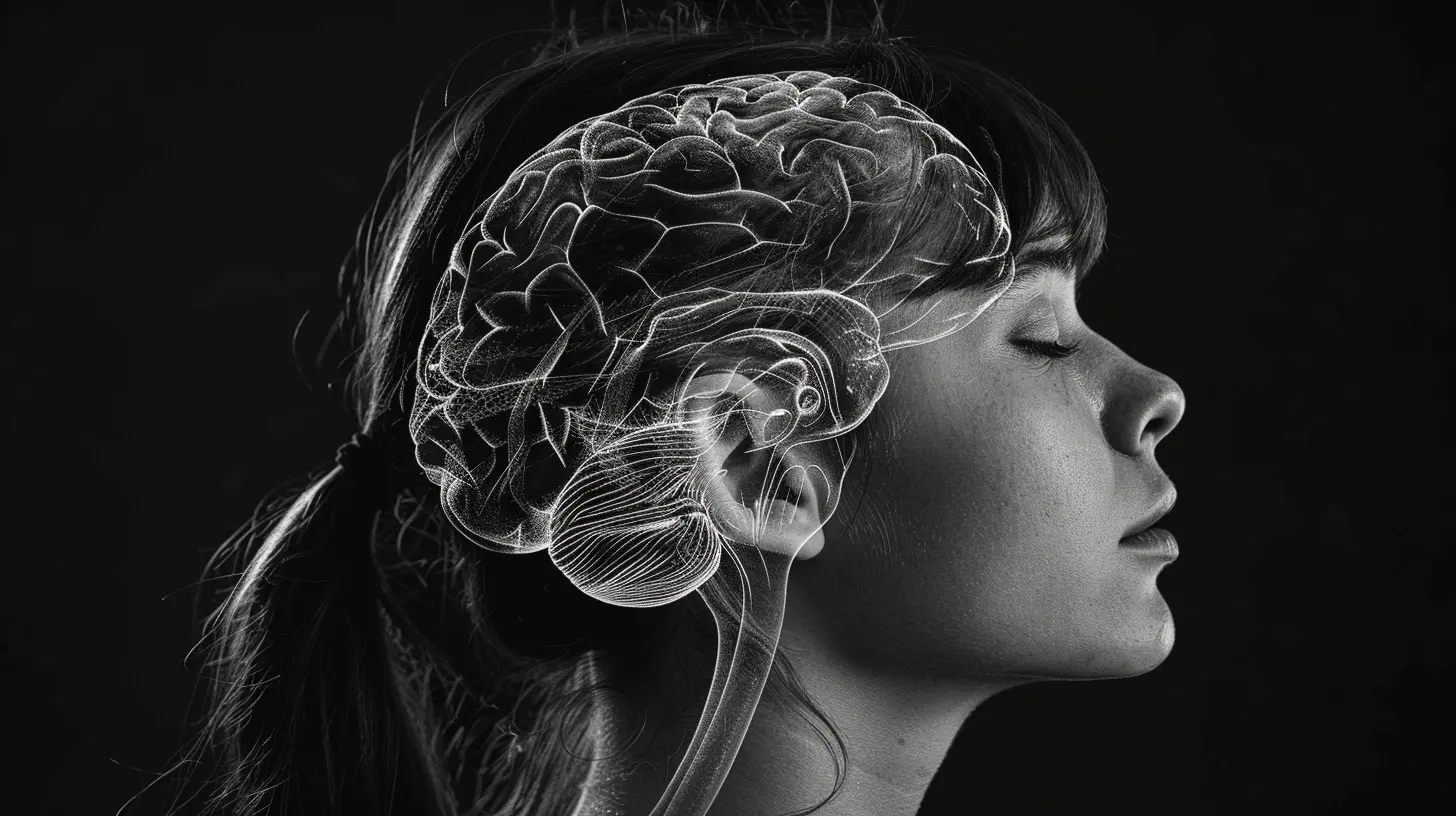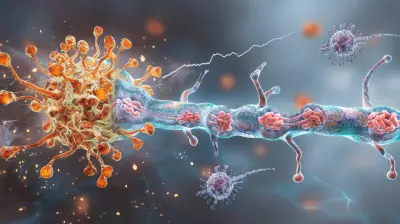The Intersection of Neuroscience and Psychotherapy
15 November 2025
Psychotherapy has been around for over a century, helping individuals navigate their mental health challenges, explore emotions, and develop coping strategies. On the other hand, neuroscience—though newer in the grand scheme of science—has made leaps in understanding the brain's inner workings. But what happens when these two fields collide? Can we use the knowledge from neuroscience to make psychotherapy more effective? Spoiler alert: the answer is yes, and it's a fascinating journey of discovery.
In this article, we'll dive into how neuroscience and psychotherapy intersect, explore the brain mechanisms behind therapeutic effects, and understand how this marriage of fields can revolutionize mental health care. So, buckle up because we're about to take a tour through the mind!

What is Neuroscience?
Let’s start with the basics. Neuroscience is the study of the nervous system, especially the brain. It’s like trying to understand how a supercomputer works—except that computer is made of billions of neurons (nerve cells) communicating through electrical signals and chemicals. Neuroscientists are like detectives, uncovering clues about how emotions, thoughts, and behaviors are encoded in the brain.A key focus of neuroscience is understanding how the brain changes. This concept, known as neuroplasticity, refers to the brain's ability to reorganize itself by forming new neural connections throughout life. This means our brain isn’t static—it’s adaptable, and it can change based on our experiences, learning, and behavior. Pretty mind-blowing, right?

What is Psychotherapy?
On the flip side, psychotherapy is an umbrella term referring to a variety of treatments that aim to help individuals manage mental health conditions. There are many different types of psychotherapy, such as Cognitive Behavioral Therapy (CBT), psychoanalysis, and humanistic therapy. But at its core, psychotherapy involves talking to a trained therapist who helps you process thoughts, feelings, and behaviors.The goal of psychotherapy is to create lasting positive changes in a person’s mental and emotional well-being. It’s like a mental workout where, instead of lifting weights, you're lifting emotional burdens, rewiring negative thought patterns, and building resilience.

The Intersection: How Neuroscience Informs Psychotherapy
Now, here’s where things get exciting. Neuroscientific research is shedding light on what exactly happens in the brain during psychotherapy, and vice versa. This growing intersection between neuroscience and psychotherapy has given birth to neuropsychotherapy—a hybrid approach that combines the insights of both fields to optimize treatment outcomes.Neuroplasticity: The Brain's Ability to Change
One of the most exciting discoveries in neuroscience is neuroplasticity. Earlier, we mentioned that the brain can change in response to experience. This is a monumental finding for psychotherapy because it proves that therapy doesn’t just change how we think or feel—it literally rewires the brain!In therapies like CBT, for example, patients learn to challenge and replace negative thoughts with more balanced and rational ones. This process strengthens new neural pathways and weakens the old, maladaptive ones. It’s kind of like learning to ride a bike. At first, you struggle, but the more you practice, the smoother it gets. Eventually, riding a bike becomes second nature. The same principle applies to thinking patterns. With enough practice, positive thinking becomes more automatic.
The Role of Memory and Emotion
Memory and emotion are deeply intertwined in the brain, and many forms of psychotherapy address how past experiences shape current thoughts and feelings. Neuroscience has shown that traumatic memories, for example, can become "stuck" in the brain's emotional center (the amygdala), making it difficult for individuals to process them rationally.Therapies like Eye Movement Desensitization and Reprocessing (EMDR) help individuals reprocess traumatic memories, moving them from the emotional parts of the brain to other areas where they can be understood and integrated. Neuroscience shows that this process actually changes how the brain stores these memories, effectively reducing the emotional charge they once held.
The Default Mode Network (DMN) and Mindfulness
Ever notice how your mind tends to wander when you're not focused on anything in particular? That's your Default Mode Network (DMN) at work. The DMN is a network of brain regions that become active when we're not focused on the outside world—when we’re daydreaming, reminiscing, or just ‘spacing out.’Interestingly, the DMN is often overactive in people with anxiety, depression, and PTSD, leading to excessive rumination (overthinking). Mindfulness-based therapies have been shown to reduce the activity of the DMN, helping individuals become more present and less caught up in their thoughts. Neuroscientific studies, using brain imaging techniques, have demonstrated that mindfulness practices can physically alter brain structures, increasing grey matter in regions responsible for emotional regulation.
Stress, Cortisol, and Therapy
You’ve probably heard of cortisol, the infamous “stress hormone.” When we’re stressed, our body floods with cortisol, preparing us for fight-or-flight responses. While this is useful in short-term situations (like running from a bear), chronic stress can wreak havoc on both the brain and body.Psychotherapy, particularly stress-reduction techniques like Cognitive Behavioral Therapy (CBT) and Mindfulness-Based Stress Reduction (MBSR), has been shown to lower cortisol levels. Neuroscientific research reveals that these therapies help regulate the hypothalamic-pituitary-adrenal (HPA) axis, the system responsible for controlling stress responses. By lowering stress levels, these therapies not only make us feel better emotionally but also protect the brain from the damaging effects of chronic stress.

Different Approaches to Neuropsychotherapy
Now that we know how neuroscience can inform psychotherapy, let's look at some specific ways this knowledge is being applied in clinical settings. There’s no one-size-fits-all approach, but here are a few methods that combine the best of both worlds:Cognitive Behavioral Therapy (CBT) and Neuroscience
CBT is one of the most well-researched forms of psychotherapy, and it’s often seen as the gold standard for treating conditions like depression and anxiety. Neuroscience backs it up by showing that CBT can result in real, measurable changes in the brain.Studies using fMRI (Functional Magnetic Resonance Imaging) have shown that after a course of CBT, patients have decreased activity in the amygdala (the brain’s fear center) and increased activity in the prefrontal cortex (responsible for rational thought and decision-making). In essence, CBT helps the brain become better at regulating emotions and responding to stressors.
Eye Movement Desensitization and Reprocessing (EMDR)
EMDR is a relatively newer form of therapy designed to help individuals process traumatic memories. Neuroscientific research suggests that EMDR works by engaging both hemispheres of the brain, allowing for more holistic processing of traumatic events.During EMDR, a therapist guides the patient through recalling distressing memories while simultaneously moving their eyes in a specific pattern. This dual-attention task is thought to mimic the brain’s natural processing during Rapid Eye Movement (REM) sleep, when memories are consolidated and stored. Over time, the emotional impact of these memories diminishes, thanks to the brain’s ability to reprocess them.
Mindfulness-Based Cognitive Therapy (MBCT)
MBCT combines mindfulness practices with cognitive therapy techniques to help individuals manage depression and anxiety. Neuroscientific research on mindfulness practices has shown that regular mindfulness meditation can increase cortical thickness in regions of the brain associated with attention, emotional regulation, and self-awareness.Mindfulness also reduces the activation of the amygdala and increases connectivity between brain regions responsible for executive control and emotion regulation. In simpler terms, mindfulness helps us hit the pause button on our emotional reactions and respond more thoughtfully to life’s challenges.
Future Directions: Where Neuroscience and Psychotherapy Are Heading
The intersection of neuroscience and psychotherapy is still in its infancy, but the future looks promising. Neuroscientific tools like brain imaging and neurofeedback are becoming more accessible, allowing therapists to tailor treatments to individual brain patterns.For instance, neurofeedback uses real-time brain activity data to help individuals learn how to regulate their brain waves. This can be especially helpful for conditions like ADHD, anxiety, and PTSD, where certain brain patterns are dysregulated.
Another exciting direction is the use of psychedelic-assisted therapy. Early research suggests that psychedelics like psilocybin (the active compound in magic mushrooms) can promote neuroplasticity and help individuals break free from rigid patterns of thinking. When combined with psychotherapy, psychedelics may offer a powerful tool for treating conditions like depression and PTSD.
Conclusion: A Perfect Partnership
The intersection of neuroscience and psychotherapy is an exciting frontier that’s transforming how we understand and treat mental health. Neuroscience provides a roadmap for how the brain works, and psychotherapy offers the tools to navigate it. Together, they offer a more holistic, brain-based approach to healing.Whether you’re someone considering therapy, a therapist yourself, or simply fascinated by the brain, the marriage of these two fields holds the promise of more effective, personalized treatments. And who knows? In the not-too-distant future, we may be using neuroscience to fine-tune therapy in ways we can only imagine today.
all images in this post were generated using AI tools
Category:
PsychotherapyAuthor:

Janet Conrad

